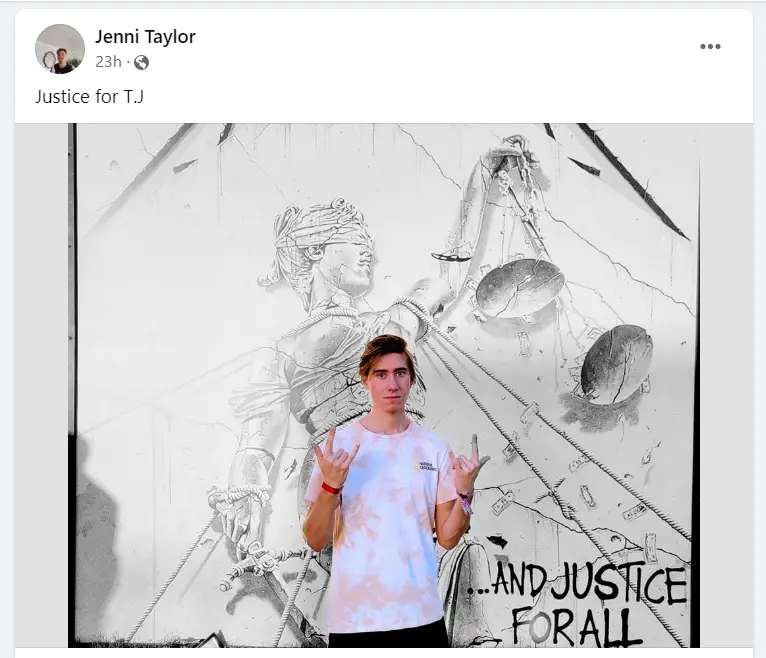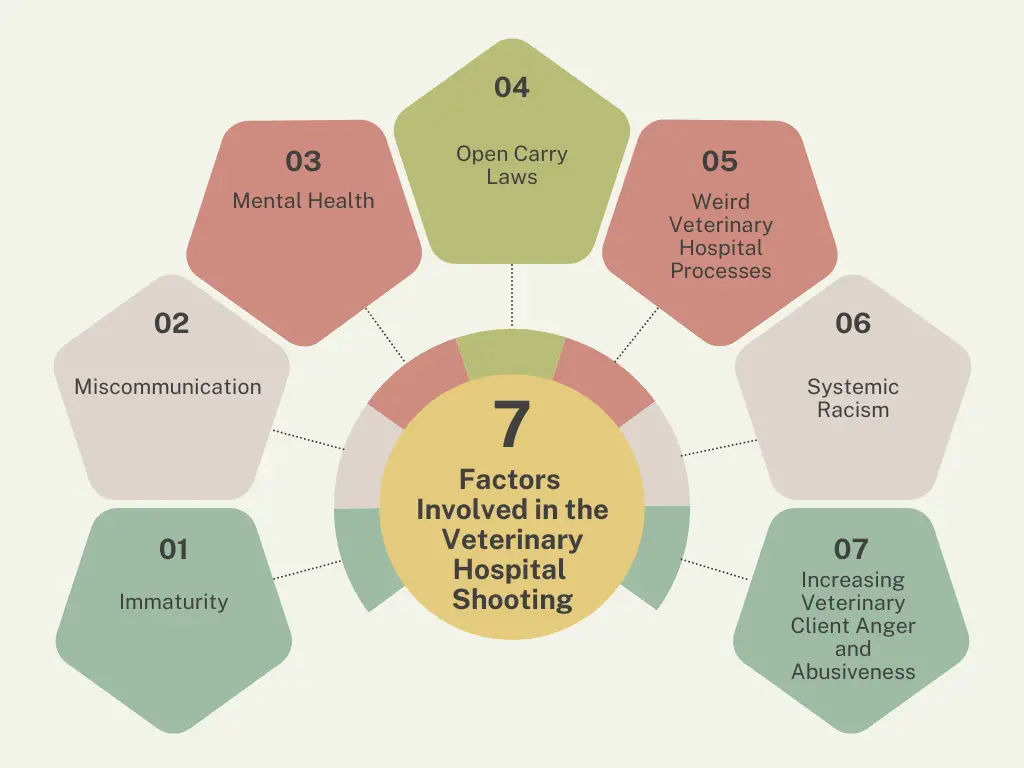More than a year ago, we reported on this veterinary hospital shooting in Kentucky. It took me a while and some money to get access to the police records and other background information. I spoke with members of the victim's family a few times. I also kept putting off digging into the details because it breaks my heart. Now that I've read through all the investigative paperwork and interviews and watched some (but not all) of the video provided on 9 DVDs, including law enforcement body cams, maybe someone like me with a long history writing about veterinary medicine can offer some fair insights, including several factors that made things worse.
Veterinary Hospital Shooting Recap
Basically, a client arrived upset about communication issues regarding their hospitalized dog. Rude words were exchanged. Yelling ensued. Shoving started. Veterinary staffers called the police. In the meantime, physical contact got more intense, and 2 client-people ended up outside with 1 veterinary hospital staffer. That staffer was shot and killed during a physical fight outside the facility -- all before the police arrived. The victim's name was TJ Taylor. Below is a photo his step-mom posted after the veterinary hospital shooting. She worked at the hospital and was there when he was killed.
Responsibility for Veterinary Hospital Shooting
The one and only person responsible for TJ Taylor's death is the shooter.
The investigative report says that a postmortem examination found "evidence (powder burns) present to indicate the shot occurred within a few inches of Taylor's chest." In addition, one witness said in a statement that "he had a hole in his chest the size of my hand."
Yes, I understand that people like to say ... "F*ck around and find out," but here's the thing. The choice to carry and use a gun is a big one. Without the gun in the equation, TJ probably would have been arrested for assault and fired. That's it.
He likely would have been around for the birth of his daughter in September. He would be raising her ... because it turns out the baby's mom died not long after giving birth due to blood clots. Now an orphan, the baby is being raised by her grandparents.
No Prosecution Due to Self-Defense
The investigator's narrative report and a later grand jury said that self-defense was valid. In perhaps some of the most convoluted legal-speak, the report says, "... it was concluded that per KRS 503.085, there was not probable cause to believe it was not self-defense." [Double-negatives, anyone?]
Here's how that statute reads: "503.085 Justification and criminal and civil immunity for use of permitted force -- Exceptions.
- A person who uses force as permitted in KRS 503.050, 503.055, 503.070, and 503.080 is justified in using such force and is immune from criminal prosecution and civil action for the use of such force, unless the person against whom the force was used is a peace officer, as defined in KRS 446.010, who was acting in the performance of his or her official duties and the officer identified himself or herself in accordance with any applicable law, or the person using force knew or reasonably should have known that the person was a peace officer. As used in this subsection, the term "criminal prosecution" includes arresting, detaining in custody, and charging or prosecuting the defendant.
- A law enforcement agency may use standard procedures for investigating the use of force as described in subsection (1) of this section, but the agency may not arrest the person for using force unless it determines that there is probable cause that the force that was used was unlawful.
- The court shall award reasonable attorney's fees, court costs, compensation for loss of income, and all expenses incurred by the defendant in defense of any civil action brought by a plaintiff, if the court finds that the defendant is immune from prosecution as provided in subsection (1) of this section."
It's interesting to me that the statute doesn't really say what level of danger is involved or justifies deadly force.
Of course, the rules in various states about what's considered self-defense, including where the incident happens. Kentucky is among 28 states and Puerto Rico which say that there is "no duty to retreat an attacker in any place in which one is lawfully present."
So, I guess that's why the KY legal process doesn't consider that the shooter did not withdraw from the situation.
Factors Involved in the Veterinary Hospital Shooting
With the incident and legal outcome background in place, let me try to look at this from a bigger picture. What factors were involved in this veterinary hospital shooting and likely made things worse? Here's what I think.
1. Immaturity
The shooter was 23 at the time. The victim was 21. Emotions often run high in the veterinary hospital environment. Such inexperience and unfounded expectations can lead to saying and doing things that escalate tense situations.
2. Miscommunication
Amid the worry of hospitalizing their dog, the client wrote down the wrong phone number for the veterinary team to use. That hindered their ability to provide updates. That said, the client did call and try unsuccessfully to get information. That added frustration to worry before the client arrived to pick up their dog.
3. Mental Health
Adding to the tension is the fact that the dog in question serves as an emotional support animal due to the client's "PTSD, bi-polar disorder, and anxiety" according to their statement to police.
4. Open Carry Laws
Kentucky has firearms laws that allow both open and concealed carry, depending on some qualifications. In this case, the gun was concealed in a purse. It was initially taken out of the bag inside the hospital as seen on video, then put back into the bag before going out the front door, then apparently taken out again outside, but you can't really see that on the videos (at least not the ones I watched).
In addition, it appears that the gun was chambered twice. The investigation narrative says, "Physical evidence collected from the scene included one casing (EXH2) and one live round (EXH1). EXH1 could be explained by actioning the slide more than once."
5. Weird Veterinary Hospital Processes
The veterinary hospital does not make appointments. As I understand it from interviews with the family, people show up when the facility opens or as needed. Based on their pets' needs, the staff tells them about how long the wait will be. Often, people go back home and wait for a call that they're pet can now be seen. The goal is to see all pets needing care every day. It seems, though, that people often wait quite a while with a relatively unpredictable timeline ahead. I understand that's the case at urgent care and ER veterinary hospitals, but this is more like a general veterinary practice providing typical wellness and sick-pet care. I think it's weird, and I think it raises the overall tension for everyone.
In addition, it seems like the veterinary hospital had no protocol for what to do when someone pulls out a weapon in the facility.
6. Systemic Racism
The shooter is Black. I can imagine that systemic racism day in and day out makes them keenly aware of every microaggression and hostility -- and every time someone tells them what to do (or not do) and especially if anyone touches them or tries to control their movement. To understand the events of the day, I think you have to understand that.
7. Increasing Veterinary Client Anger and Abusiveness
Knowing what I know about veterinary hospitals after writing about them for nearly 30 years, I guarantee that *this upset client was not the first one that day (or maybe even that hour) to express dissatisfaction or to challenge staff about one thing or another. It got much worse during the pandemic, and many veterinary professionals go through their workdays just waiting for the next onslaught of anger and verbal abuse and/or refusals to pay for a pet's care after the fact. It's bad out there these days. Many veterinary professionals are leaving their jobs. Others choose suicide.
I've written before about how not to get fired as a veterinary client. I think shooting someone counts as a reason to sever the veterinary-client relationship. Following this veterinary hospital shooting, I joked with some pals in the profession that maybe all new veterinary client paperwork now needs to include a question like this: "Have you ever injured or killed a veterinary hospital doctor or staff member?"
What Else?
There's a lot more I could write about what happened, what the videos show, what the witnesses said, and what I think others in the veterinary profession can learn from this veterinary hospital shooting, but I'll stop for now with these factors that overlay the events of the day.
Learn More?
If you want to learn more, visit Justice for TJ Taylor on TikTok or on Facebook.
NOTE
FYI - I've turned off commenting for this post because I don't want any drama, with everything else going on in the world and my life.





0 comments